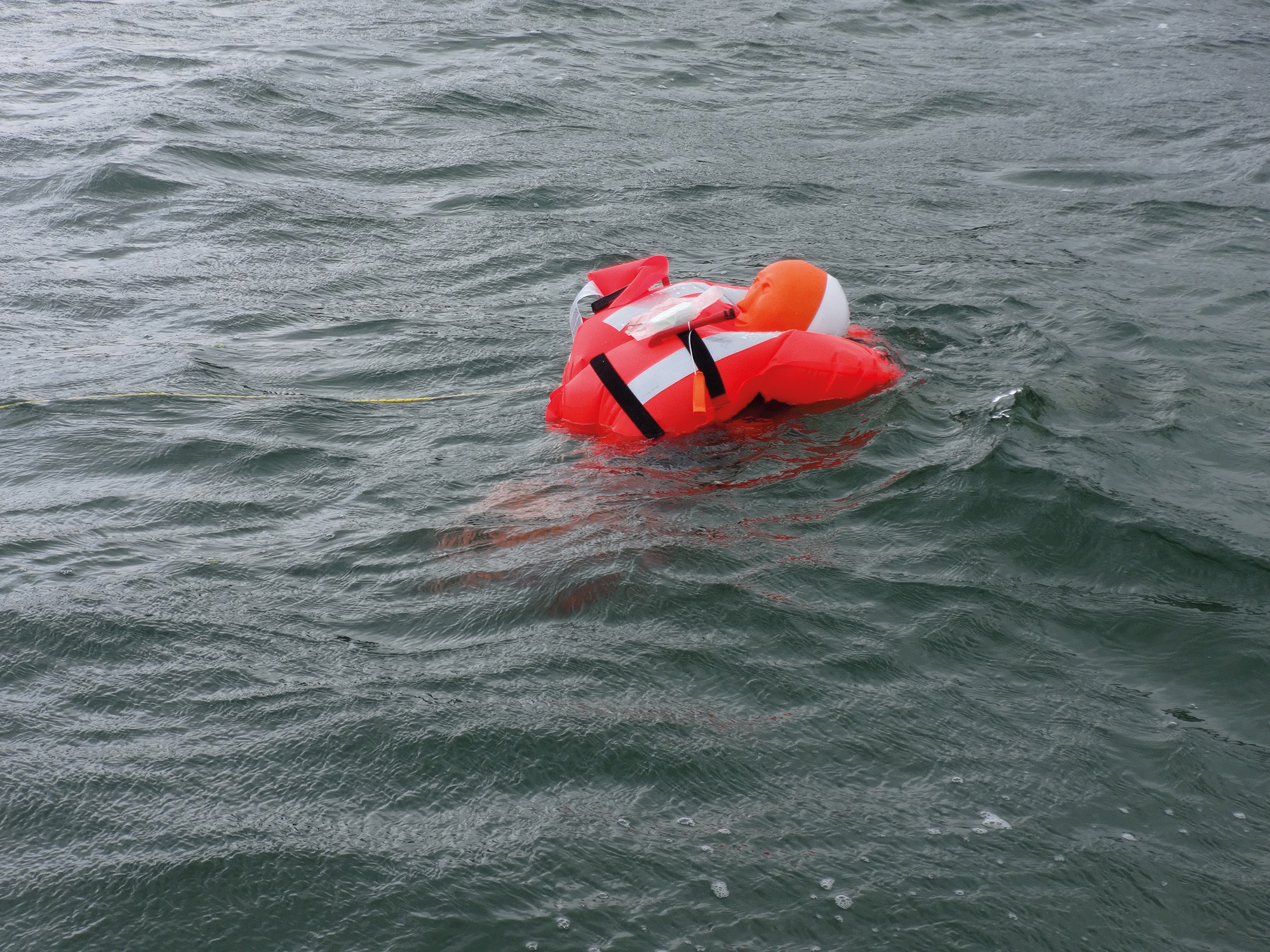Reliably finding shipwrecked persons - with a novel radar system
Howling winds and heaving seas with towering waves – when a man goes overboard in a storm like this, the crew quickly loses sight of him. And conventional navigation radar does not help much either. A novel radar system, however, is capable of reliably locating drowning persons, as such providing valuable help for rescue missions. A first field test was extremely promising, but a lot of research work is still required until the system can be used routinely.

When someone goes overboard on the high seas, it is difficult for the crew to find the person among the towering waves and the ship's radar only helps to a limited degree. That is because the waves reflect the emitted radar signals similar to how a person does – so waves and people give off almost the same echo.
Locating Shipwrecked Persons from up to Six Kilometers Away
This is not the case with the new SEERAD system: It makes it possible to detect people and small rescue boats from large distances. It was developed by the Institute for Microwaves and Plasma Technology of FH Aachen University of Applied Sciences, Fraunhofer FHR, and the company Raytheon Anschütz GmbH. To do this, SEERAD uses the following trick: The radar signals are usually reflected by the water and the person in such a way that the signal's frequency remains the same. But by attaching a transponder to the life jacket that returns the signal with a different frequency, the echoes of waves and the person can be distinguished. This requires two antennas on the ship: One for the ordinary radar and a second one for the echo of the transponder. When a transponder signal reaches the ship, the rescue crew will know: Someone is in distress here. All antennas were developed at Fraunhofer FHR – the two antennas on the ship together are no larger than a ship's conventional radar antenna. In addition, the ones in the transponder are seaworthy and resist the heavy strains placed on it by the waves.
A test run in the Baltic Sea showed: The system is promising. When the dummy that went »overboard« had a passive transponder – without a battery – on his life jacket, it was possible to locate it at a distance of up to 600 meters, while an active, battery-powered transponder allowed for the »drowning« dummy to be located at a distance of six kilometers with a transmission power of only 100 watts. In comparison: Until now, so-called harmonic radar systems only scanned about a kilometer, but required a transmission power of 1000 watts to do this.
A Lot of Research Work Is Still Required
However, a lot of research work is still required to make the system useable in sea rescue missions on a routine basis. The task consists in integrating the system into the ship navigation systems, minimizing interferences, and ensuring that it permanently works under the rough conditions at sea.